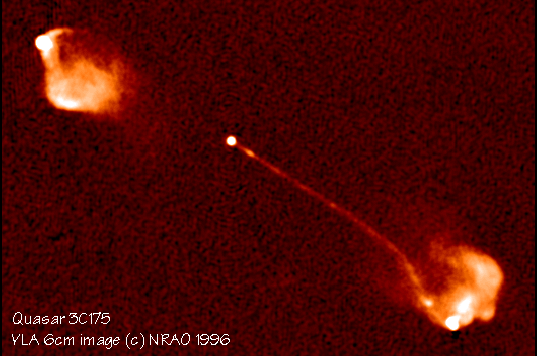Massive survey makes sense of the diversity of quasars
Ars Technica » Scientific Method 2014-09-21

In the hearts of some massive galaxies lie strange objects known as quasars. These mysterious objects were named for their apparent similarity to stars (quasar is short for ‘quasi-stellar radio source’), but they're now understood to be the light from rapidly accreting, supermassive black holes. In addition to their prodigious light output, they often emit jets of charged particles from their poles at close to the speed of light.
Mysteriously, quasars come in a variety of seemingly random forms, leading scientists to search for the cause of their diversity. While there are trends in their variation, up until now, no definitive evidence has been found to confirm any of the models we had for their appearance. But a new study has found a clear relationship between quasar properties and how they look, suggesting an underlying mechanism.
The study, which made use of archival data from the Sloan Digital Sky Survey, analyzed the spectra of more than 20,000 quasars, the first time a study of this type has been achieved with a statistically significant sample size. Within that huge sample, a pattern began to emerge.
Read 22 remaining paragraphs | Comments